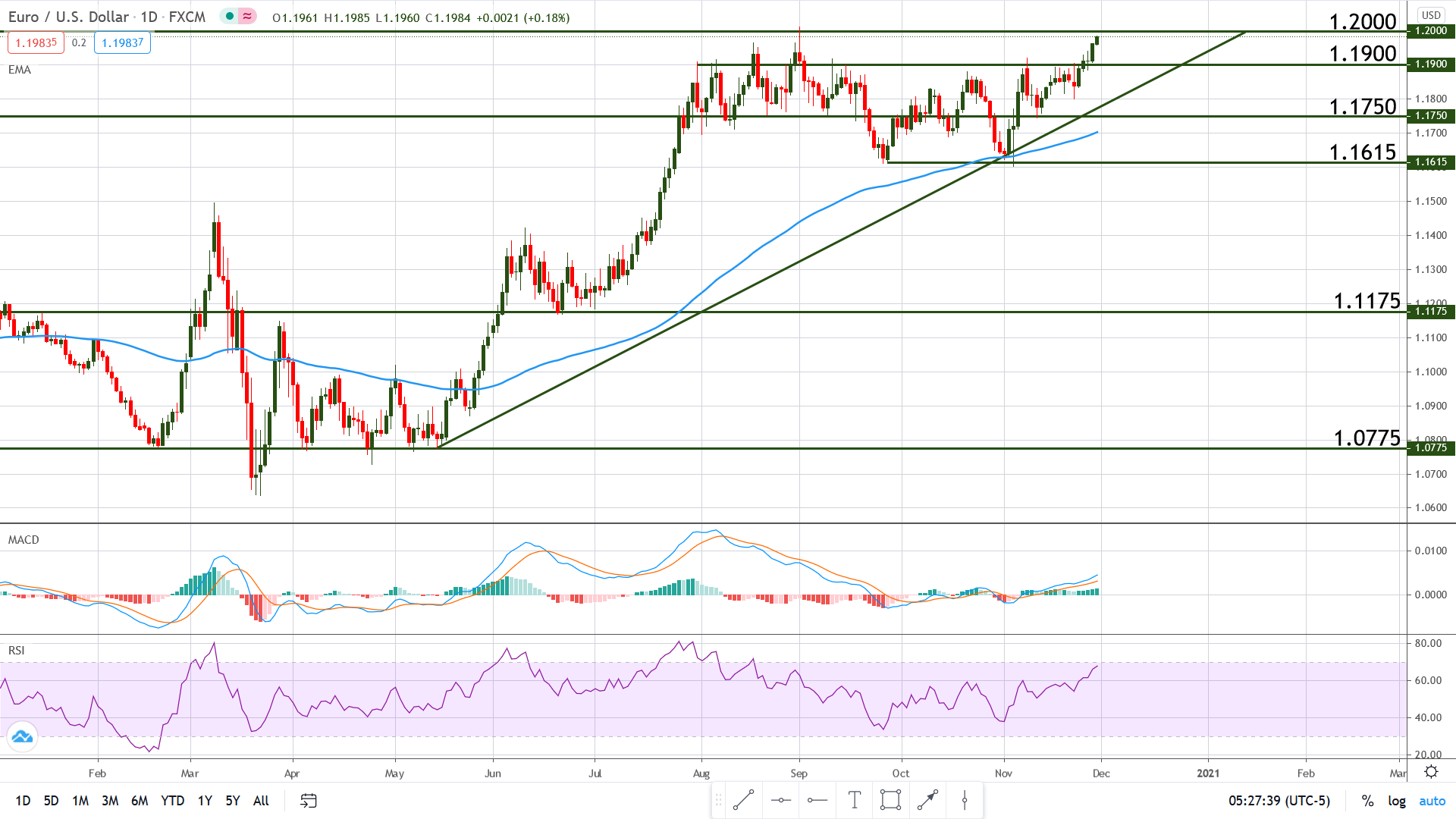US Dollar Bruised and Battered Ahead of Crucial Employment Data
What To Expect From The Dollar, Volatility
The Euro – Dollar pair is inches away from the “line in the sand” represented by the crucial level at 1.2000. About 3 months back, European Central Bank’s Chief Economist Philip Lane and other ECB officials stated they don’t want to see the shared currency climb above the mentioned level, as it could hinder the nascent economic recovery.
The pair flirted with the 1.2000 level back in early September, falling into 1.1600 territory twice (late September and early November), and rising back up to 1.1985 at the time of writing. This begs the question: does the Euro have enough oomph to shatter this key resistance or can the greenback stage a reversal? The answer may be found in the economic calendar and will likely depend on the crucial U.S. employment data scheduled for Friday.
Key Events for the Week Ahead
The US Dollar will be affected by scheduled events even before the employment data set to come out Friday. Here are some of the most notable: Tuesday, December 1 at 3:00 pm GMT, Fed Chair Powell will testify in Washington DC before the Committee on Banking, Housing, and Urban Affairs, with the main topic being the CARES Act. The committee’s questions are not known before hand, thus the answers may trigger a strong market reactions.
Wednesday, December 2, Fed Chair Powell will testify again, on the same matter, but this time before the House Financial Services Committee. The impact may be lower, because his stance is more or less known from a day before, but caution is recommended nonetheless.
The “main event” of the week is scheduled Friday, December 4 at 1:30 pm GMT: the U.S. Non-Farm Employment Change, aka Non-Farm Payrolls. The report shows the monthly change in the total number of employed people in the US, excluding the farming industry and is widely regarded as the most important jobs data, with a very high market impact. The forecast is 500K (previous 638K) and usually, numbers above forecast are beneficial for the US Dollar. At the same time the Unemployment Rate and the Average Hourly Earnings will be released, helping to create a clearer picture of the US employment situation.
Chart Analysis – EUR/USD
The pair spent a relatively long time trading in a range, capped by 1.2000 and with a double bottom around 1.1600. The double bottom is actually a bullish pattern, which usually results in a climb. As we can see from the Daily chart below, this was the case here as well: price bounced at the confluence zone created by the support at 1.1615 and by the 1000 periods EMA (blue line).
The real question is: what’s next? Can the bulls move price above the 1.2000 “line in the sand”? The RSI and the MACD are both moving upwards, supporting the idea of a breakout and price is trading above the support at 1.1900 as well as above a bullish trend line, thus there are enough signs that a break can occur. However, there are no certainties in trading, and caution remains a trader’s best friend.
